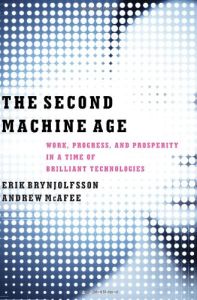Join getAbstract to access the summary!

Join getAbstract to access the summary!
Erik Brynjolfsson and Andrew McAfee
The Second Machine Age
Work, Progress, and Prosperity in a Time of Brilliant Technologies
W.W. Norton, 2014
What's inside?
The computer revolution will produce greater change than the Industrial Revolution.
Recommendation
Erik Brynjolfsson and Andrew McAfee of the MIT Center for Digital Business address the impact of digital technologies, moving smoothly from broad perspectives and historical syntheses to specific examples from contemporary scientific and business activity. The authors describe the changes digital technologies bring and show their historical roots, analyze their causes and explain their implications. They recognize the difficulties of predicting technological change, though their section on the future is not quite on par with the brilliance of the rest of this absorbing overview. getAbstract recommends their insights to anyone seeking greater understanding of the social and economic impact of digital technologies.
Summary
About the Authors
Erik Brynjolfsson, director of the MIT Center for Digital Business and Andrew McAfee, a researcher at the Center and author of Enterprise 2.0, co-authored Race Against the Machine.

























Comment on this summary